A column about design process, design policy, design and politics.
This week
“Don’t put your daughter on the stage, Mrs Worthington.” Song title by Noel Coward, 1936.
It’s been a remarkable week of pop music, but you need to pay attention to the designs.
Swiftly becoming digital
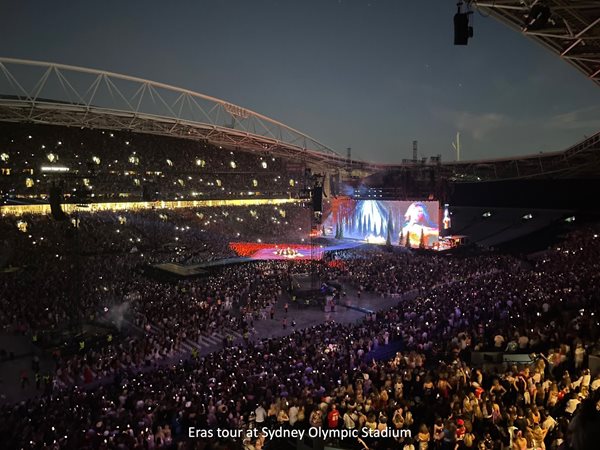
Not just the music. Taylor Swift’s ERAs concerts received resounding reviews for whole enveloping experience. Which of course is the result of brilliant design. We highlighted the costumes in DN last week. Now that we’ve seen more of the stage show (virtually, sans ticket) we can see how it is based around two key ideas: dynamic moving physical stage platforms, and giant, enormous, really big, huge digital screens.
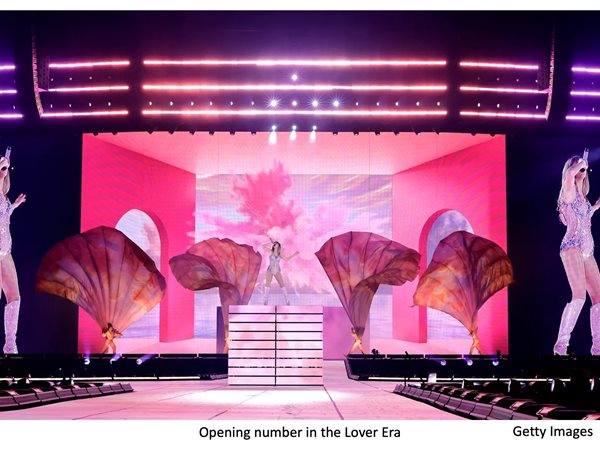
The creative director and production designer is Ethan Tobman, who previously worked with Taylor on her 2021 Grammys performance and several of her music videos. He also worked with Beyoncé, and as a production designer on movies. He had a huge task in bringing a tiny person to a vast audience of 80,000+ people. Here’s an excellent run-down in Architectural Digest.
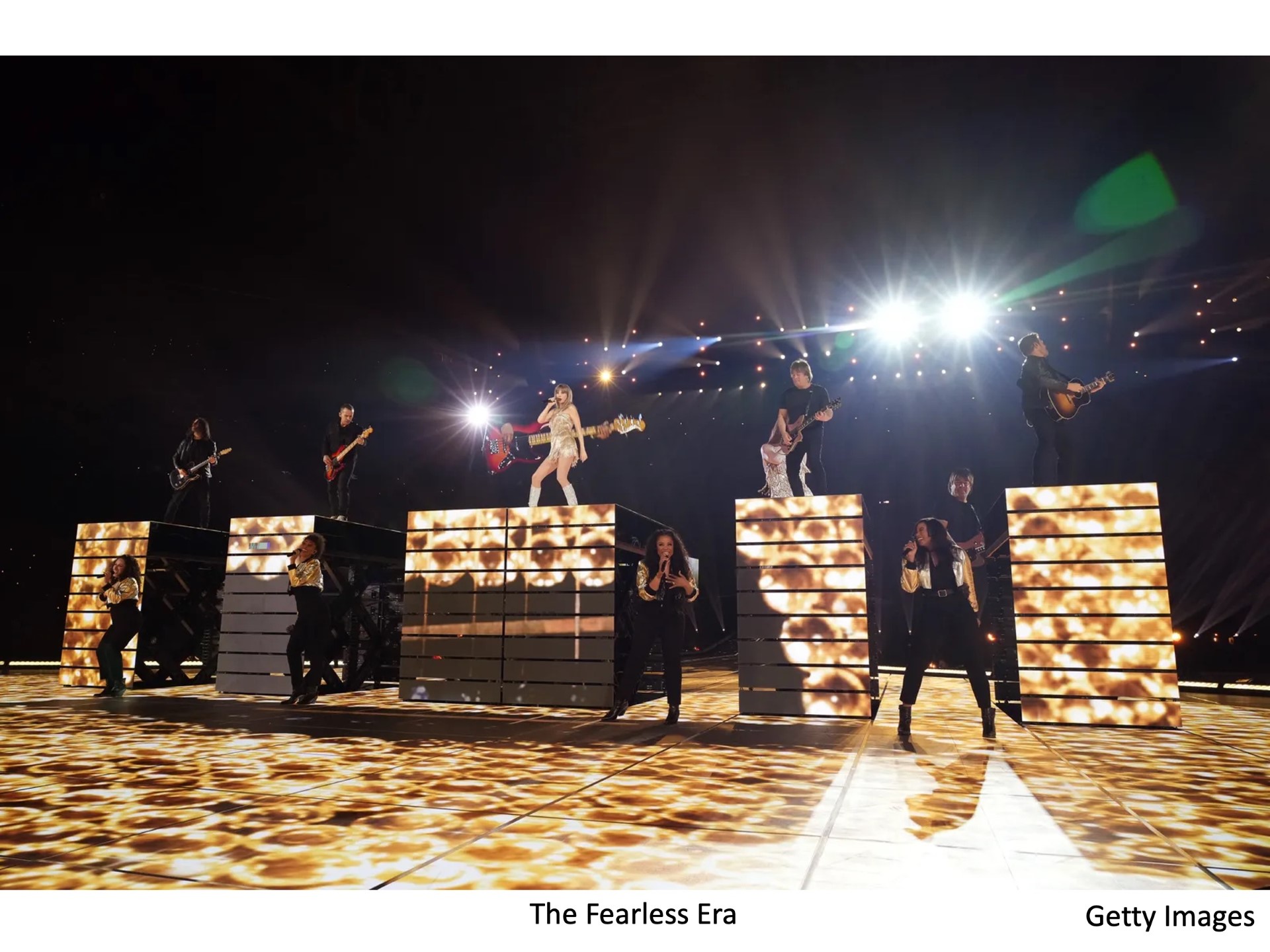
It's some distance from the huge physical sets, with giant television screens on both sides of the stage, exampled by drummer Charlie Watts’ designs, and lumbered around the world by the Rolling Stones (and featured here, and here and here).
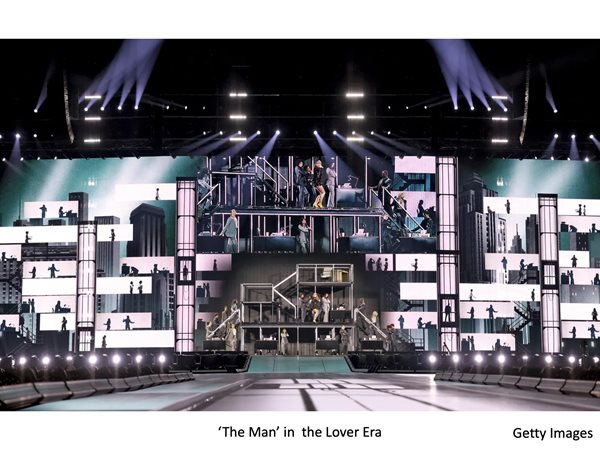
Now the screens morph into a continuous backdrop, projecting every movement and dance up close. Together with the digital screen, the moving stages, rising and falling sets and lighting it all creates the atmospherics. Not to mention the electronically connected bracelets for everyone.
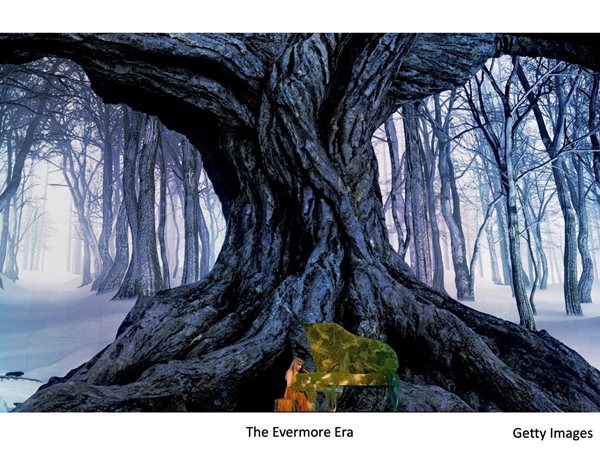
Swift’s show is perhaps a glimpse into the future of spaces made by digital alone, with little physical framing of the space. Not virtual, but real space made by digital.
You too can be digital
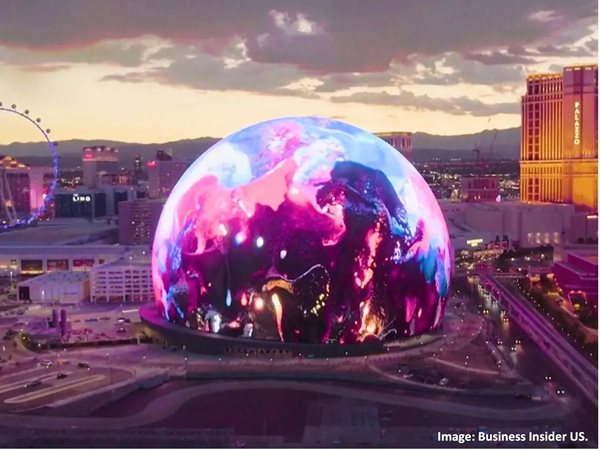
Which brings us to The (MSG) Sphere in Las Vegas. A giant dome (thanks Bucky) with billions of programmable LEDs in and outside. Inaugurated last October by U2, the structure glows even during the daytime. A somewhat remarkable feat given the burning Las Vegas sun. Similar domes have been planned for other cities, including London, but are yet to go ahead.
What happens when the facade of architecture no longer exists, but becomes a shimmering digital surface? A window into a fuzzy future, sometimes glimpsed in the movies Bladerunner, and Black Rain. But here. Now.
Raheen rocks on
Across town from Taylor Swift's 90,000 at the MCG, and a week later Katy Perry performed an intimate concert for a select 220 political movers and shakers and uber-wealthy, at Raheen, the home of Visy cardboard boss, Anthony Pratt. Without imagery of the performance, we turn our attention to Pratt's Mansion, reputedly worth a $100m.
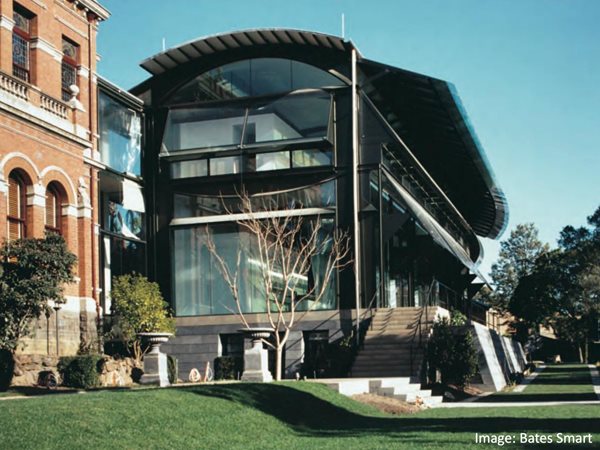
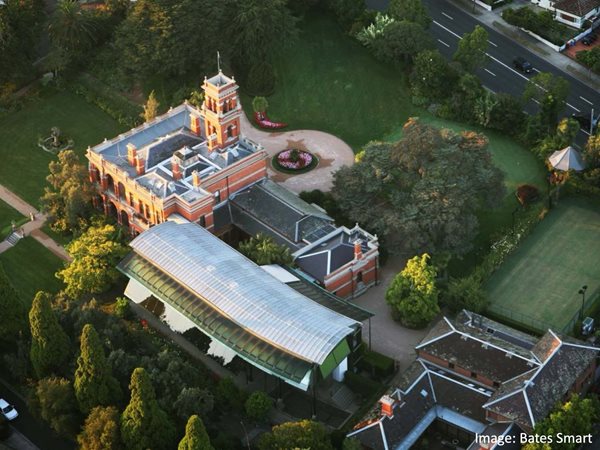
The historic Red Brick Home has had two major extensions. The first in the early 90s was a softly curved addition to the major house, designed by Glenn Murcutt, in conjunction with Bates Smart. In real life it appears as if the drawings were done at 1:100, but built at 1:50. Magnificent, but oddly stiff. Murcutt himself rarely acknowledges the building; it doesn't appear in any the books on his work.
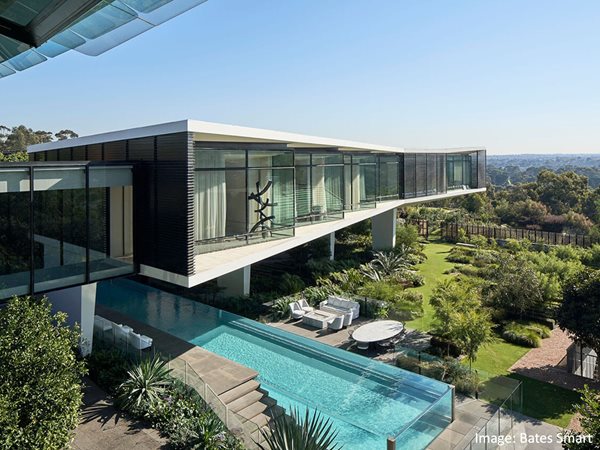
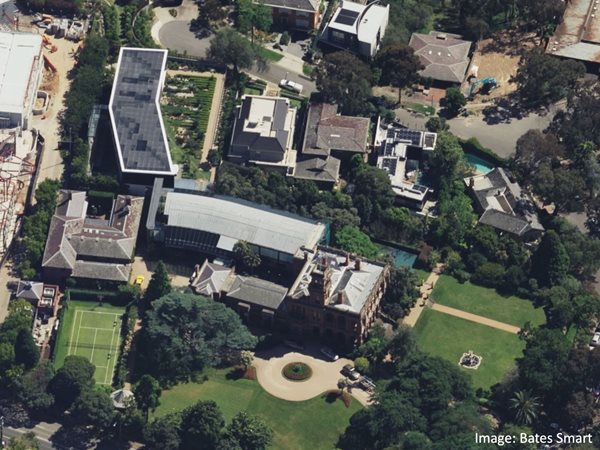
Some 30 years later, there’s this extension further over the hill as a telescope to the surrounding views. Costing close to $10m, it took 20 architects and designers at Bate Smart to complete. Is this where we are now in opulent alts and adds? I would have thought that money would be far better spent on 30 houses for the homeless through one of Pratt’s many philanthropic ventures. The imagery here is taken from the Victorian AIA awards submission. Not awarded.
Shelling out after 50
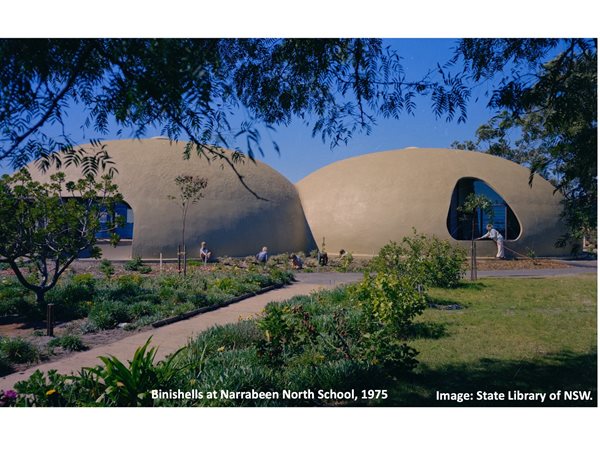
It is 50 years since the first ‘Binishell’ was built in Sydney - eventually 15 at various schools, of which 8 still exist. Created by inflating a huge ‘balloon’ with compressed air, lifting flexible lightweight reinforcement, which was then sprayed with concrete, like a swimming pool. The deflated balloon left a concrete shell, to be cut open in a variety of ways or joined together.
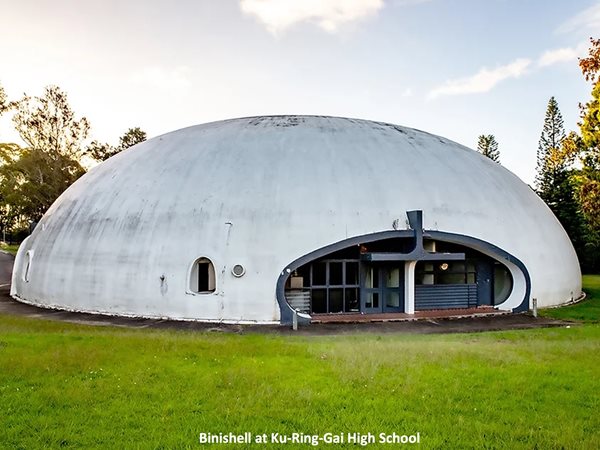
The inventor, Dante Bini is 93 and still energetically supporting his futuristic Jetsons-like buildings. There’s an excellent review in ArchitectureAU, and a detailed explanation of the history in the SMH.
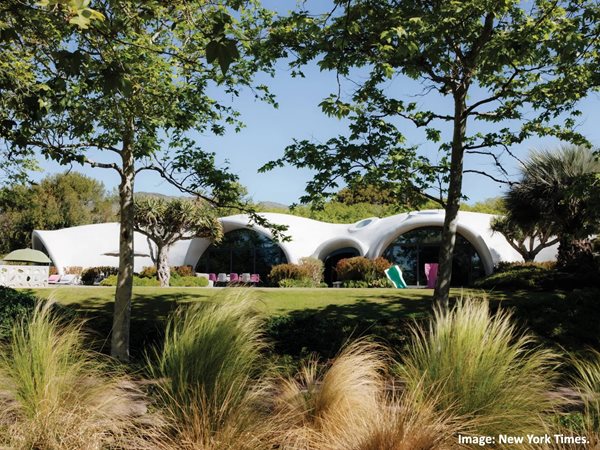
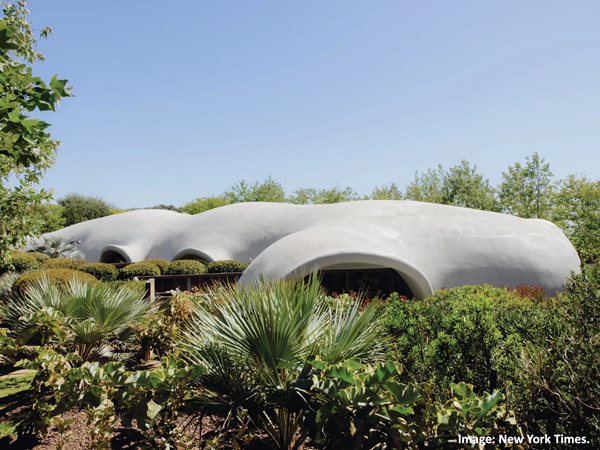
His architect son Nicolo Bini has taken on the ideas; most recently he designed an organic house for actor Robert Downey Jr. Leaving aside the cinema, ‘Iron Man’ now casts himself as a futurist, proselytising ideas for a more sustainable future, and funding foundations alike.
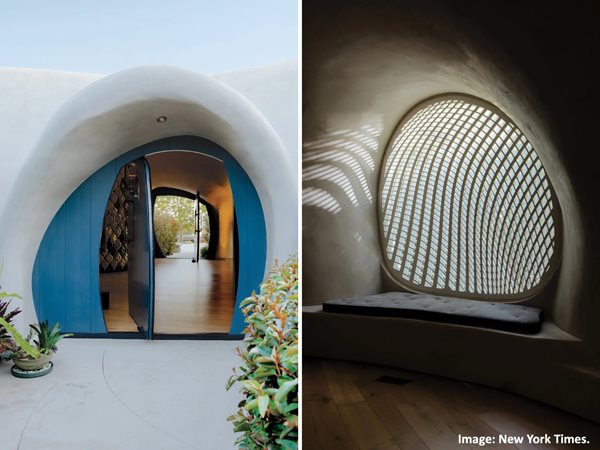
Through a TV series, Downey's Dream Cars, he converts his family's various ancient cars into more sustainable forms, including a Corvette Stingray and VW Kombi into EVs and an old Mercedes runs on biofuel.
Bookends

A book on the Binishells by Melbourne University Professor Alberto Pugnale, and Alberto Bologna.
Signs Off

Anthony Pratt, described by the creep on the left, firstly as a ‘great gentleman’ only to later dismiss him as a ‘red-headed weirdo’ Don’t you just wish you had a bright yellow pen to add an S to the sign between them.
Next week
Court in the Act.
Tone Wheeler is an architect /adjunct prof UNSW / president AAA.
The views expressed are his.
These Design Notes are Tone on Tuesday #197, week 9/2024.
Past Tone on Tuesday columns can be found here
Past A&D Another Thing columns can be found here
You can contact TW at [email protected]

